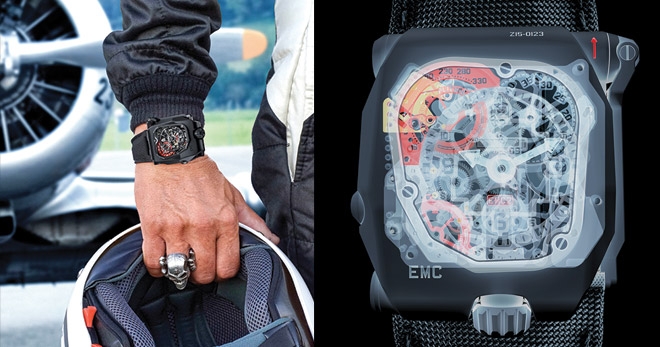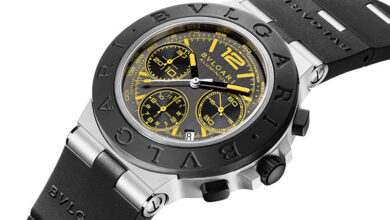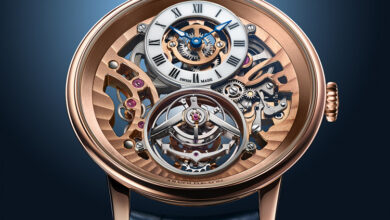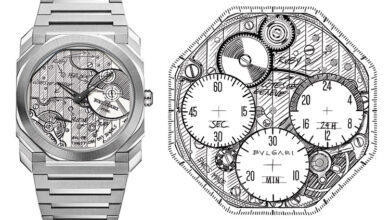The subversive TimeHunter X-Ray from URWERK

Simply by pressing a button you discover whether your watch is running fast or slow and the amplitude of its balance; you can also adjust it for optimum timekeeping
The EMC TimeHunter combines a precision mechanical movement with an electronic module that monitors its rate. The EMC concept, introduced in 2013, has won the URWERK brand watchmaking’s most prestigious awards.
URWERK’s TimeHunter X-Ray – a limited edition of 15 watches that delivers a conceptual and stylistic knockout – gives an idea of the inner workings, the play of wheels and pinions that ensure the watch’s chronometric performance.
The TimeHunter X-Ray is a timepiece that is easy to read with a central dial for black hours and minutes hands coated with white SuperLuminova for enhanced contrast. A rotating disc showing the seconds at 1 o'clock is balanced at 7 o'clock by a power-reserve indicator. The TimeHunter’s performance indicator showing its rate (± 15 seconds a day) and balance amplitude on demand are at 10 o'clock.
The movement can be seen through the sapphire crystal on the back of the watch. Also on the back is the rate-adjustment screw, one of the nerve centres of this watch. The back of the watch reveals two opposing worlds sharing the same case: electronic circuits and the finest mechanical movement.
Even the most expensive movement remains a useless mechanism if it’s not properly adjusted is the premise on which the URWERK team has based the EMC TimeHunter. The rate of a mechanical watch depends on its position in space as well as its temperature. Before selling a precision watch, therefore, the manufacturer usually tests it by placing it on a continuously rotating arm in a room where the temperature is relatively stable. The watch thus spends the same amount of time in each position.
However, in real conditions, the time spent in each position varies according to the working or leisure activities of its owner and for how long the watch is actually on the wrist. Thus, two identical watches with different owners might show a different weekly gain or loss.
The owner of an EMC TimeHunter watch can, by simply by pressing a button, find out the rate of his watch — how much time it is gaining or losing. He can then adjust it accordingly. This interactive feature enables the owner to adapt his watch to his lifestyle and the changing environment.
While the rate of a watch — its daily gain or loss — can be easily understood, the amplitude of its balance is less obvious. This measures, in degrees of an arc, the swing of a pendulum in a clock or of an oscillating balance wheel in a watch. In theory, each oscillation of a pendulum or a balance must be isochronous – of exactly the same duration, irrespective of its amplitude.
In most mechanical watches, an amplitude of between 240° and 310° ensures optimal performance. Amplitude can be affected by a variety of factors and is thus a valuable indicator of whether the watch needs servicing.







